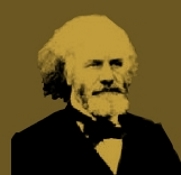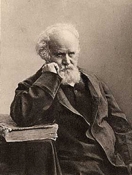Pierre, Jules, César Janssen
Born in Paris, in February 22nd 1824, and died in Meudon,
in December 23rd 1907.
An accident at a young age left him unable to walk, which prevented him from
attending school. He began working as a bank clerk at age 16, studying mathematics
in his spare time. He graduated in 1852 with degrees in mathematics and physical
sciences, and obtaining his doctorate in 1860 at Sorbonne.
In
1862, Janssen began his studies of the solar spectrum. His first important contribution
was to demonstrate that some of the dark lines observed in the solar spectrum
were caused by water vapor in the Earth's atmosphere. He made lasting contributions
in solar spectroscopy, in particular in the observation of solar prominences.
Using a spectroscope he discovered that the solar prominences are gaseous. He
also discovered the chromosphere, a type of gaseous envelope of the Sun. . Following
his observations of solar eclipses , he suggested that some of the unknown spectral
lines observed above the solar limb were due to an unknown chemical element; Helium.
Janssen was also an early pioneer in the use of chronophotography
in solar physics. A long barreled canon-like automatic camera was invented in
1874 by him. Janssen used a slowly revolving plate and shutter operated by clockwork.
Mars
crater: Janssen's crater is one of the biggest hot spots for the presence of
water. Maybe because that central crater there seems quite recent.
Moon
crater: Janssen's crater - 199 kilometers in diameter, hexagonal in shape and
may be the oldest feature on the moon.
©Images from Miloslav
Druckmuller site, used with permission.
©2008 theojanssen.ca



